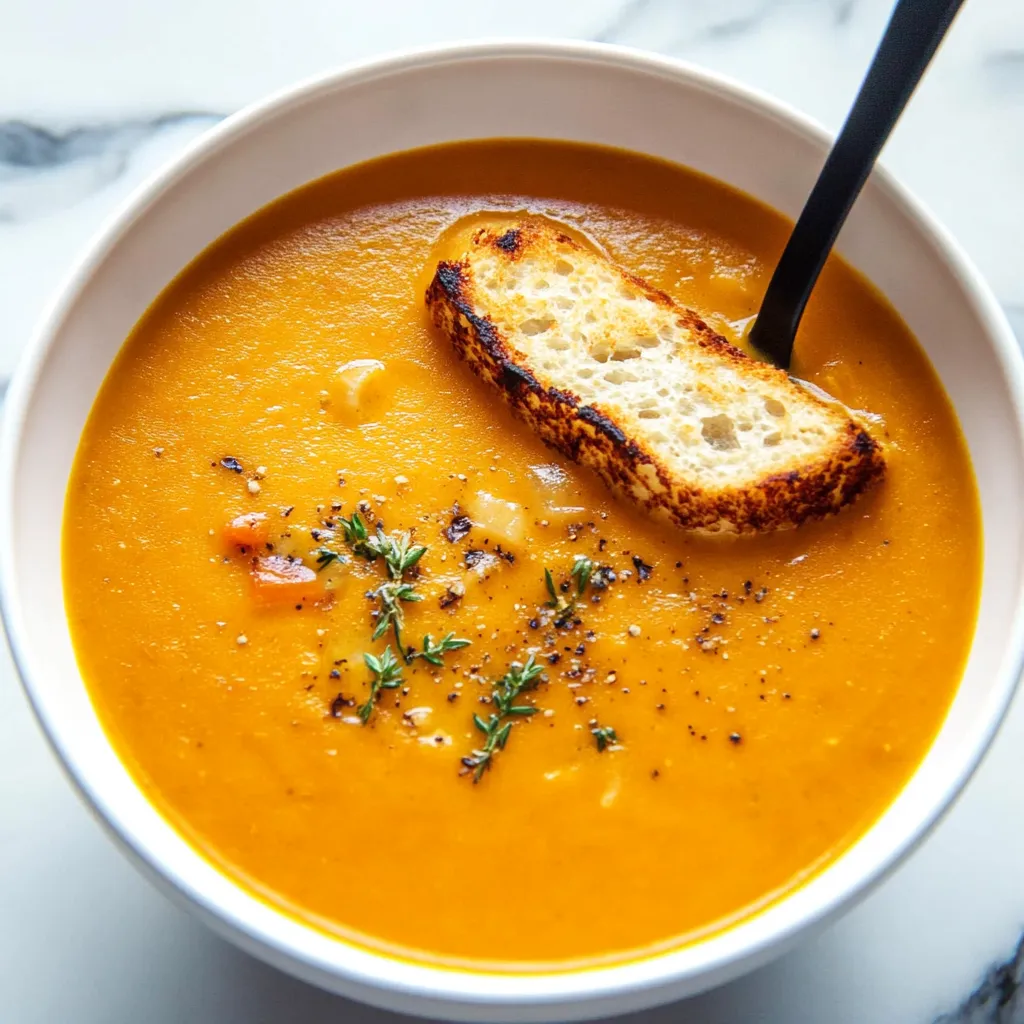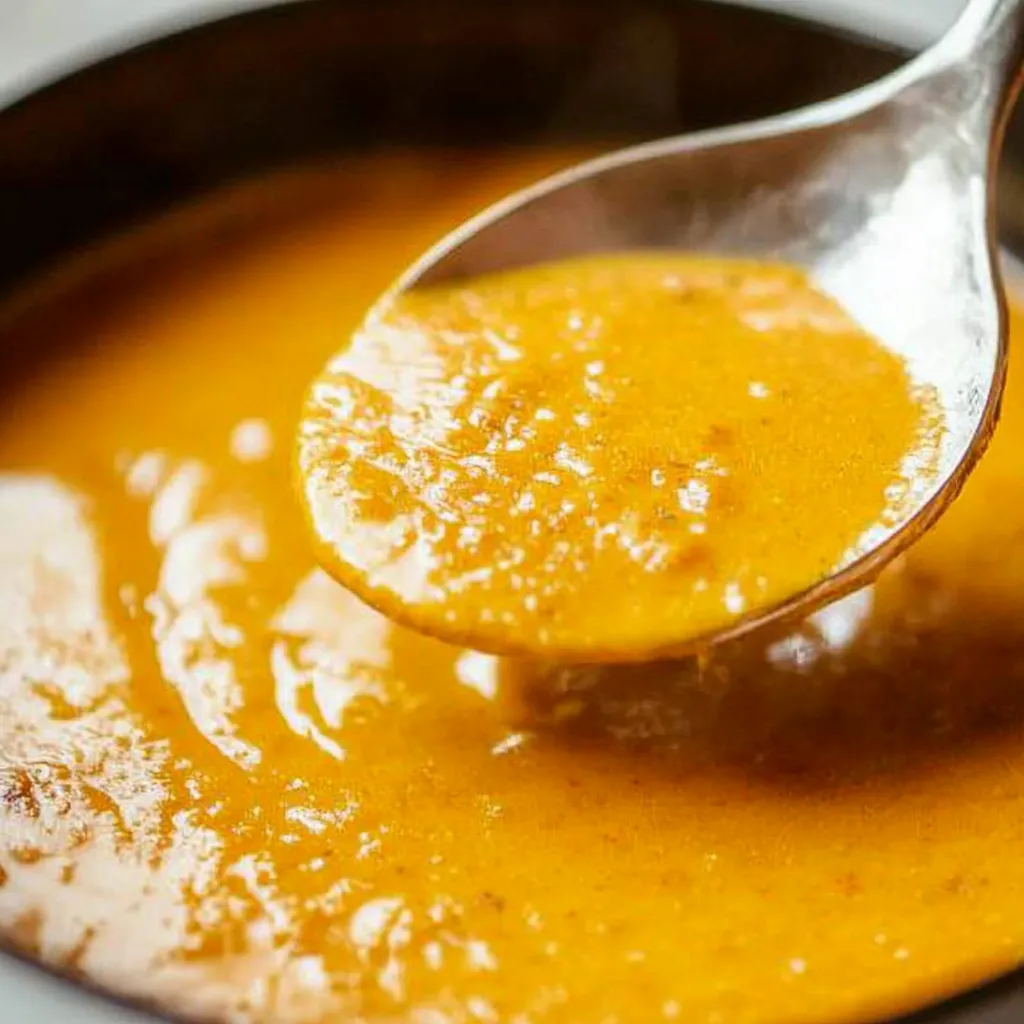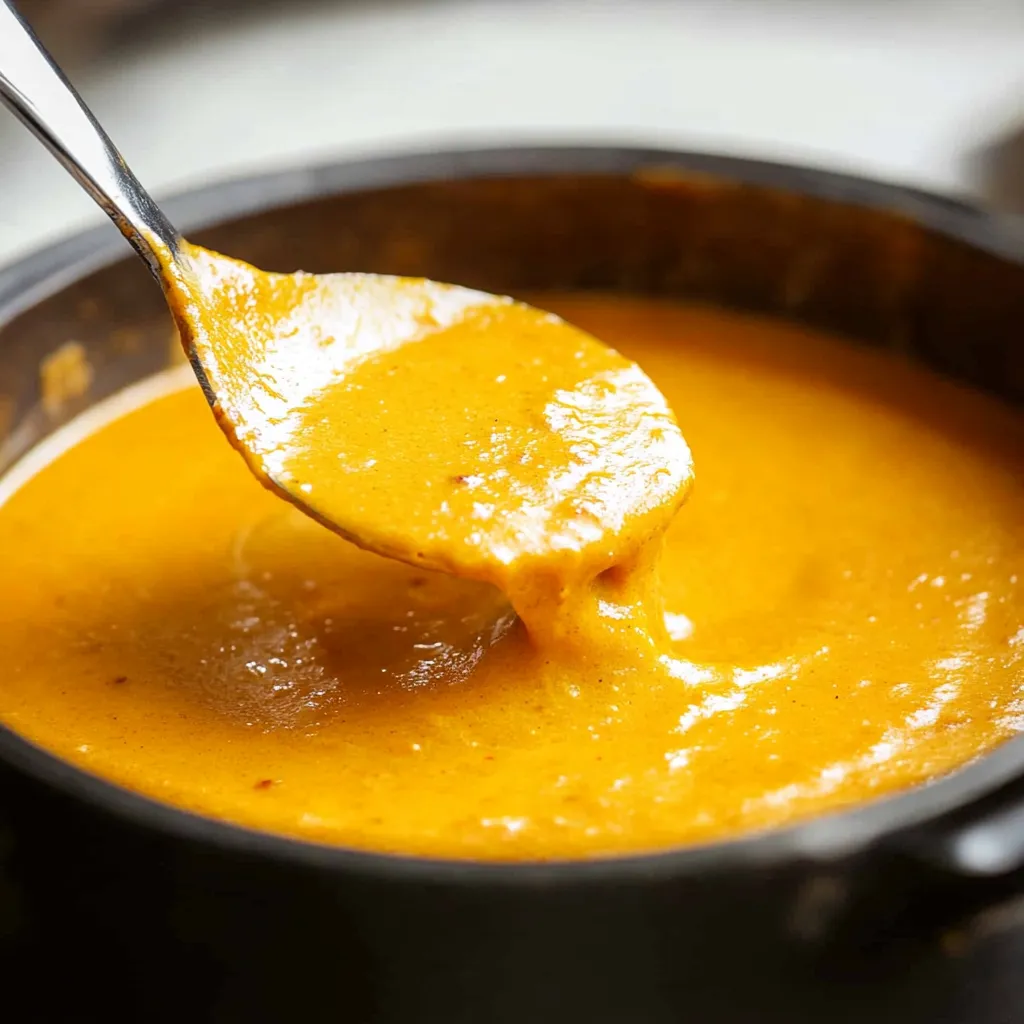 Save it
Save it
Unlock the game-changing trick to making super flavorful veggie soup: pop those veggies in the oven first! Watch regular carrots, parsnips, sweet potatoes and garlic turn into something amazing as they brown up. The heat brings out their natural sweetness and creates deep flavors that blend into a soup so smooth and rich, you'd never guess it's completely dairy-free. Roasting works wonders by concentrating all those tasty bits while getting rid of extra water—something you just can't get from boiling.
I stumbled on this method after many weekends trying to nail down the ultimate veggie soup. When I served that first batch of oven-roasted soup, it changed everything—my whole family couldn't believe how creamy it was with just vegetables! Now as soon as fall hits, my Sunday routine includes filling the house with that wonderful smell of veggies getting golden in the oven.
Finding the Best Ingredients
- Sweet potatoes: Go for ones with rich orange color and smooth skin. They should feel heavy when you pick them up—that means they're packed with the good stuff that'll make your soup amazing.
- Red bell peppers: Pick peppers that have bright color and shine. They need to feel solid with a green stem attached. Heavier ones pack more juicy sweetness.
- Parsnips: Grab medium ones with light-colored skin and no mushy parts. The smaller ones taste sweeter, while big ones can get tough and woody.
- Carrots: Look for bright orange ones that snap easily. Stay away from any with green tops which taste bitter. Fresh ones have crisp greens still attached.
- Yellow onions: Choose solid, weighty onions with papery outer layers. Good ones won't bend when you squeeze them and won't have any sprouts coming out.
- Whole garlic: The bulb should be tight with no sprouts peeking out. Each segment needs to be full and covered, not dried up or shrinking.
- Fresh herbs: They should look vibrant and smell amazing. Skip any that look sad or yellowish.
- Whole spices: Get your cumin and coriander as whole seeds and crush them just before cooking to get the best flavor hit.
Making Your Soup Shine
- Nailing the Roasting Step
- First things first—cut everything the same size so it all cooks evenly. Chop sweet potatoes and roots into small chunks, while peppers can be a bit bigger. Even cuts mean everything finishes at the same time.
- Smart Seasoning
- Build flavor from the ground up. First coat everything with olive oil so each piece has a thin layer that'll help it brown. Then add freshly ground spices, making sure they stick to all sides. The oil helps wake up those spice flavors when they hit the heat.
- Heat Management
- Get your baking sheets hot before adding any veggies. When they hit that hot surface, they start to caramelize right away. Don't crowd the pan—each piece needs its own space to brown properly.
- Getting the Perfect Roast
- Look for the edges turning golden, veggies shrinking a bit as water cooks off, and brown spots forming. Your kitchen will smell amazing when they're done right.
- Creating the Foundation
- Once roasted, your veggies are flavor bombs—much more intense than they started. Put them in your pot with good stock where they'll work together to create depth you can't get from just boiling them.
- Smooth Blending
- Start your blender slow then speed up gradually. Move around the pot to catch everything. You'll see it change before your eyes, getting smoother and creamier with each pass.
- Last Touches
- Taste it and maybe add more stock if it's too thick—it should slide off your spoon like silk. Add salt and pepper carefully, remembering the flavor gets stronger as it sits.
 Save it
Save it
My grandma always said making soup was like creating art—you need patience and care. The day she showed me how to roast veggies first totally changed my cooking. Now when I watch those vegetables turn golden brown in the oven, their flavors getting richer by the minute, I get what she meant about turning simple things into something special.
Delightful Serving Suggestions
This smooth, rich soup deserves special treatment. Start with warmed bowls so it stays hot longer. Drizzle some good olive oil on top in a pretty pattern. For lunch, pair it with toasted sourdough topped with melty aged cheddar. When friends come over, fancy it up with homemade garlic croutons, snipped fresh herbs, and a spoonful of herb-mixed yogurt or cashew cream on top.
Fun Twist Ideas
Let what's growing now guide your soup choices. When fall comes around, try using butternut squash instead of sweet potatoes—they get super sweet when roasted. Toss in some cauliflower pieces for extra creaminess without dairy. Add roasted mushrooms for deep, savory flavor. Each change creates a whole new soup while keeping that smooth, silky texture everyone loves.
Keeping It Fresh
Store your soup right to keep that amazing texture and taste. Use glass containers with snug lids, filling them almost to the top. It'll stay good in the fridge up to five days—and often tastes even better the next day! For freezing, leave a little room at the top since it expands. Divide into meal-sized portions for easy reheating. Thaw in the fridge overnight, then warm slowly on the stove, stirring now and then and adding a splash of hot broth if needed to get the texture just right.
After years of working on this technique, I've learned that taking your time with the roasting creates magic that no amount of spices can match. The veggies tell me they're ready through their smell, how they look, and that perfect tender feel. This soup has become our family tradition, warming our home and bringing everyone to the kitchen to watch simple vegetables transform into bowls of golden comfort.
 Save it
Save it
FAQ sur la recette
- → Why roast veggies first?
- Roasting makes veggies sweeter and more flavorful compared to other methods.
- → Why cut veggies into small pieces?
- Evenly sized pieces roast evenly. Large chunks could end up uncooked or burnt.
- → Can I use different vegetables?
- Sure! Swap sweet potato for squash, but bigger changes will alter the flavor.
- → Does it work for meal prep?
- Yes! Flavors actually get better if stored overnight in the fridge.
- → Why roast garlic with skins on?
- The skins keep garlic soft and sweet instead of burning during roasting.
